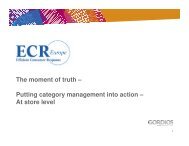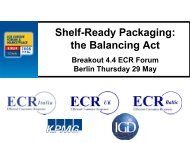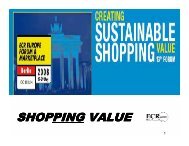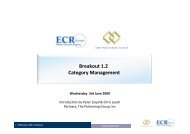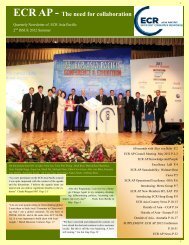Create successful ePaper yourself
Turn your PDF publications into a flip-book with our unique Google optimized e-Paper software.
Today’s unit loads perform poorly<br />
The survey revealed that unit loads currently perform<br />
poorly in a number of key areas, which are addressed<br />
later in this Report in more detail. These are:<br />
• Pallets, favoured by manufacturers, perform<br />
poorly in terms of product protection, theft<br />
prevention and weight of the pallet itself. Half<br />
and Quarter Euro pallets are inefficient as they<br />
first need to be put on Euro pallets before<br />
going into racking<br />
• Roll cages, used in retail operations, are<br />
perceived as expensive, heavy and inefficient<br />
for storage. They are involved in more than 30<br />
percent of staff injuries.<br />
• One-way secondary unit loads are considered<br />
to be insufficiently durable and are rarely<br />
modular. They are often incompatible with<br />
other unit loads.<br />
• Returnable secondary unit loads, or secondary<br />
RTI are seen as compatible, durable and stable;<br />
however, identification is a disadvantage.<br />
Figure 9: Bottlenecks preventing Efficient Unit Loads<br />
20<br />
Bottlenecks<br />
Bad fit to primary product<br />
Impact on product quality<br />
Increase in operational cost<br />
Level of investment required<br />
Uncertainty about savings<br />
Not accepted by marketing<br />
Bad fit to shelf dimensions<br />
Importance score<br />
No Low Middle High<br />
Poorly performing unit loads are<br />
widely accepted<br />
Even though manufacturers and retailers are aware of<br />
the poor performance of unit loads, they use them<br />
widely:<br />
• Pallets are chosen because they fit existing<br />
infrastructure. They are a widely accepted,<br />
proven solution, requested by all trading<br />
partners<br />
• Despite their disadvantages, roll cages are<br />
widely accepted and are the favoured means<br />
of shipping most assortments within the<br />
retailers’ half of the supply chain<br />
• One-way secondary unit loads are chosen by<br />
manufacturers to fit existing packing<br />
equipment. They also are a widely accepted,<br />
proven solution<br />
• RTI are perceived to offer many advantages,<br />
and are being used increasingly, particularly by<br />
retailers. However, identification remains a<br />
problem.<br />
Different areas of focus hinder change<br />
When asked about bottlenecks or barriers preventing<br />
EUL, manufacturers and retailers focused on different<br />
issues. Manufacturers regard primary product fit as the<br />
key issue since secondary unit loads are designed to<br />
protect the integrity of primary product characteristics,<br />
and retailers view shelf space utilisation as the most<br />
critical issue. As will be explained later, product focus<br />
and shelf focus impose different constraints on unit<br />
loads. Both manufacturers and retailers regard<br />
investment and operational costs as key bottlenecks,<br />
particularly if a suitable compensation mechanism has<br />
not been developed.<br />
Manufacturers<br />
Retailers<br />
Source: A.T. Kearney Survey, Efficient Unit Loads project<br />
The Efficient Unit Loads Report



